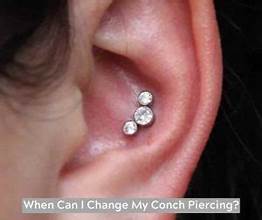Bar piercings are versatile and stylish, used in a variety of piercings from tongues and eyebrows to industrial and nipple piercings. While it’s tempting to switch to a new design or shorter bar soon after getting pierced, timing is crucial. Changing your bar too early can lead to irritation, delayed healing, or even infection. Understanding when and how to change it safely will help protect your piercing and ensure it looks its best.
Understanding the Healing Process
Every piercing goes through two stages of healing: initial healing and complete healing. During the initial phase, the bar is helping the piercing stabilise while the tissue repairs. This is why piercers often use a slightly longer bar at first, it allows for swelling without putting pressure on the skin. Complete healing means the tissue inside the piercing has fully recovered, which can take much longer than the outside appearance suggests.
General Healing Times for Common Bar Piercings
While healing times vary depending on your body and aftercare, here are average timelines:
- Tongue: 4–8 weeks
- Eyebrow: 6–8 weeks
- Nipple: 6–12 months
- Industrial (scaffold): 3–9 months
- Ear cartilage (rook, daith, helix): 3–6 months
Signs Your Piercing Is Ready for a Bar Change
Before changing your jewellery, your piercing should show clear signs of healing:
- No swelling, redness, or tenderness.
- No discharge or crust forming around the jewellery.
- The jewellery moves smoothly without discomfort.
If you’re unsure, consult a professional piercer. You can also explore different styles of bar piercings that are suitable for healed piercings, ensuring you choose a safe material and proper fit.
Risks of Changing the Bar Too Early
Switching your bar before the piercing is fully healed can cause several issues:
- Prolonged swelling and tenderness.
- Irritation or rejection, where the body pushes the jewellery out.
- Increased risk of infection due to disrupted healing tissue.
The Role of Jewellery Material and Fit
Your starter bar is often longer to accommodate swelling. Once healed, switching to a shorter bar can improve comfort and reduce snagging. For both starter and replacement jewellery, safe materials include titanium, surgical stainless steel, niobium, and solid gold.
How to Change the Bar Safely
For your first jewellery change, it’s best to visit your piercer. They have the tools and experience to make the switch without damaging the healing tissue. If your piercing is fully healed and you want to change it at home:
- Wash your hands thoroughly.
- Clean the jewellery and piercing with sterile saline solution.
- Insert the new bar gently, avoiding unnecessary twisting.
- Continue aftercare for a few days to keep the area clean.
When to Seek Professional Advice
See a piercer or healthcare professional if you notice:
- Persistent swelling, redness, or pain.
- Difficulty removing or inserting the bar.
- Signs of infection such as warmth, discharge, or throbbing.
Last Thoughts
Changing the bar in your piercing is exciting, but it’s important to wait until your body is ready. Patience during healing ensures you can enjoy your new jewellery without complications. Once your piercing is fully healed, a well-fitted, high-quality bar can improve comfort, style, and longevity.

